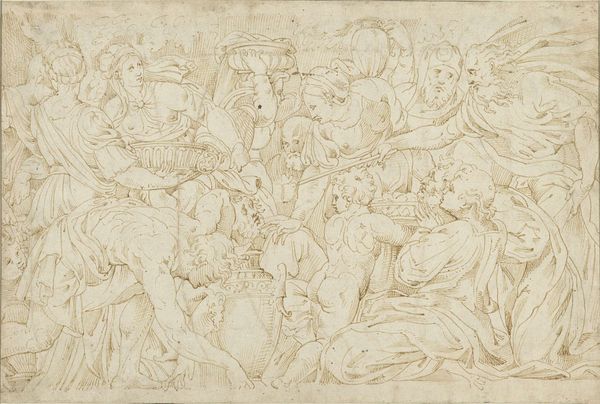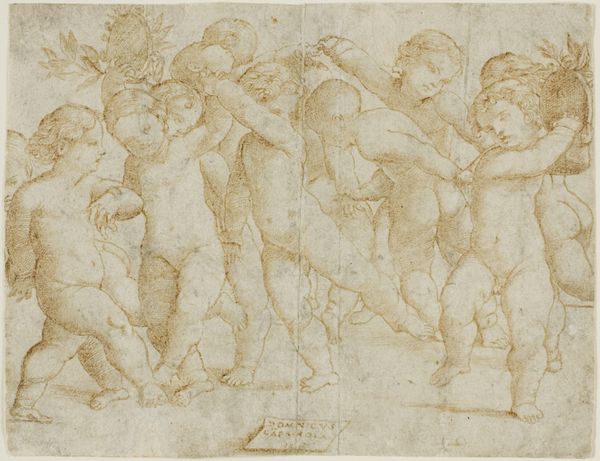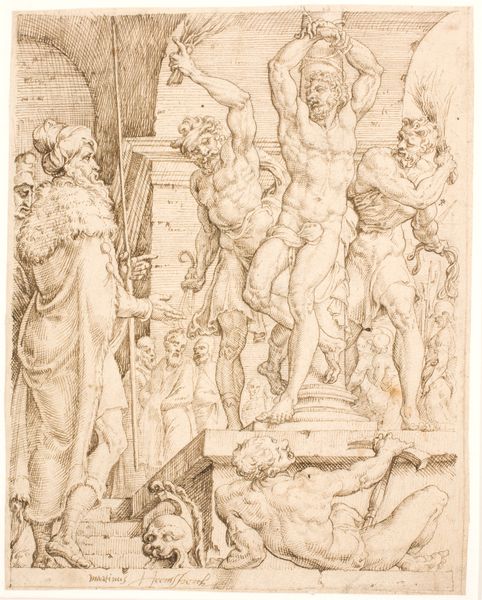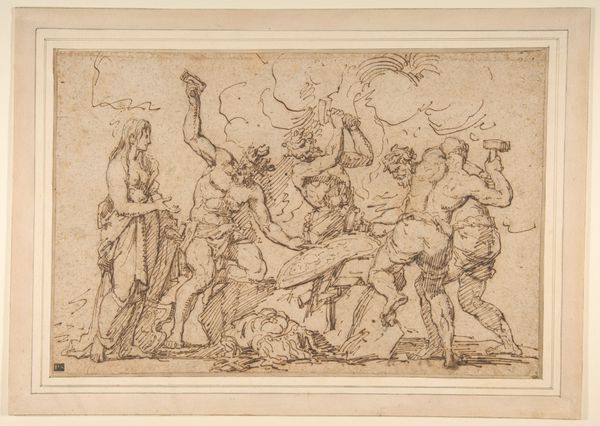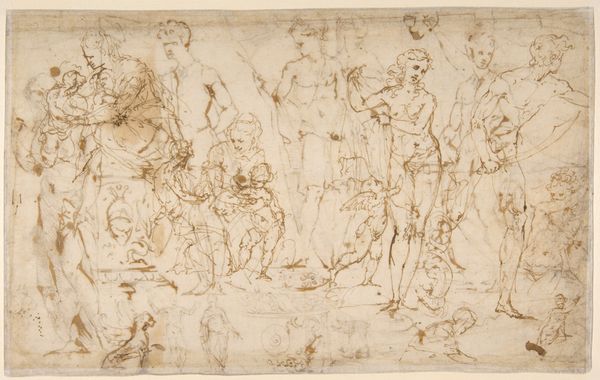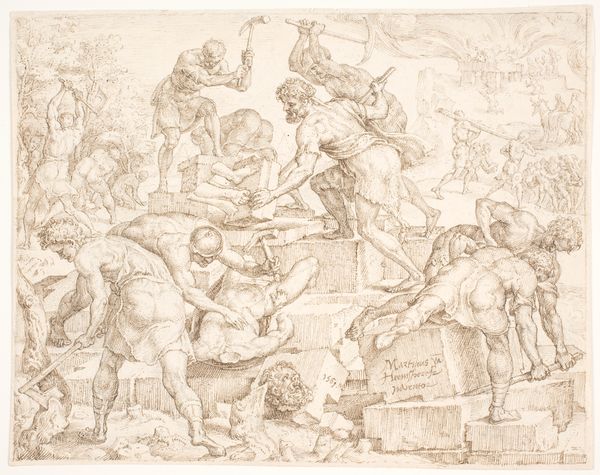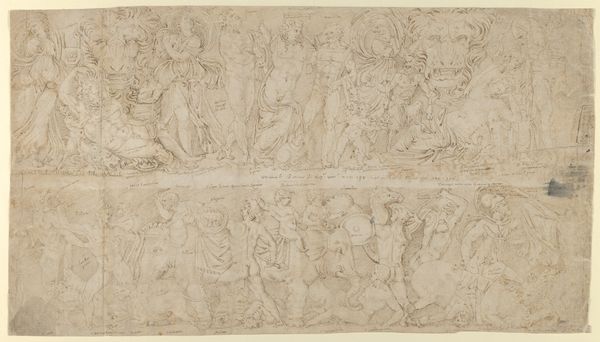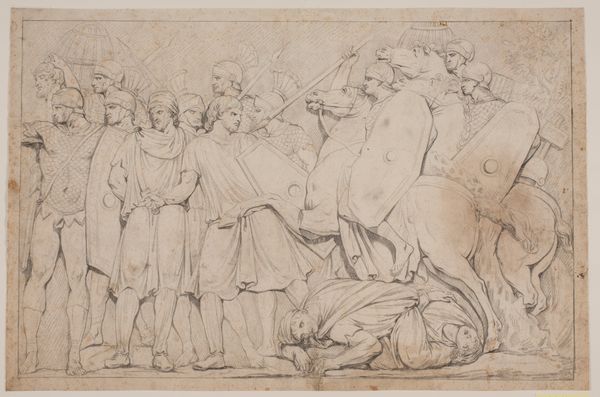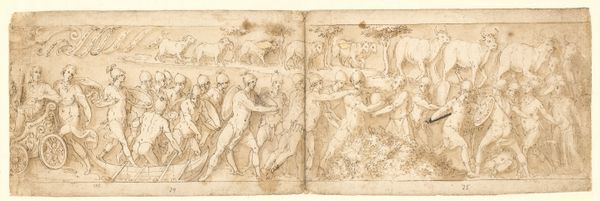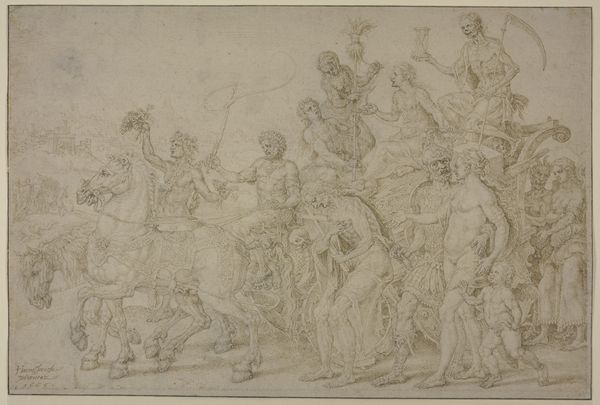
A Sarmatian village is destroyed under the eyes of the emperor (XCVIII and beginning of IC); barbarians look on from a stand (CVI); Marcus Aurelius receives a mounted German messenger on horseback (CVII) 1544 - 1618
0:00
0:00
drawing, ink, pen
#
drawing
#
narrative-art
#
pen drawing
#
figuration
#
ink
#
classicism
#
pen
#
history-painting
#
academic-art
Dimensions: 133 mm (height) x 432 mm (width) (bladmaal)
Curator: Giovanni Guerra rendered this dynamic scene between 1544 and 1618. It's titled "A Sarmatian village is destroyed under the eyes of the emperor (XCVIII and beginning of IC); barbarians look on from a stand (CVI); Marcus Aurelius receives a mounted German messenger on horseback (CVII)". We can see it today here at the SMK, Statens Museum for Kunst. The drawing employs pen and ink. Editor: Wow, it feels like a flurry of controlled chaos. So many figures jammed into one space. My eye doesn't know where to land first! What strikes me immediately is how the artist manages to convey all the action with such a limited palette. Curator: Indeed. Notice the clear classical influences in the figuration. Guerra uses the visual language of ancient Rome to elevate and idealize the narrative, which, of course, serves a very specific symbolic function. We are reminded of the power and order that Roman authority embodied. Editor: I find myself wondering what story is truly being told. We have the emperor presiding over destruction, barbarians observing from a distance... then a messenger appearing. Are we seeing different acts within the same drama? I can’t help but notice all the horses—they’re practically characters in their own right, conveying power, speed, and inevitability. Curator: That’s a very astute observation. The artist groups his figures into discrete sections, clearly separated by these ruptures. Each vignette alludes to the emperor's dominance in very different modalities. So we could surmise that Guerra here presents a complete picture of military pacification and control. Editor: But the drawing style almost softens that blow somehow. There is that kind of nervous energy to each line, like it was all rendered by candlelight. It suggests the fleeting nature of even the most triumphant power, no? Maybe destruction, even depicted academically, is just plain ugly in the end. Curator: An insightful reflection, to be sure. Perhaps, even as Guerra presents the triumph of order, the raw immediacy of his technique reminds us that history is not just grand narrative, but an accumulation of lived moments, always provisional and complex. Editor: It is indeed fascinating how the artist’s technique infuses a human touch into an otherwise grandiose historical narrative. What you said about the power and limitations of art is something worth chewing on for our walk back to the entrance, isn't it?
Comments
No comments
Be the first to comment and join the conversation on the ultimate creative platform.


